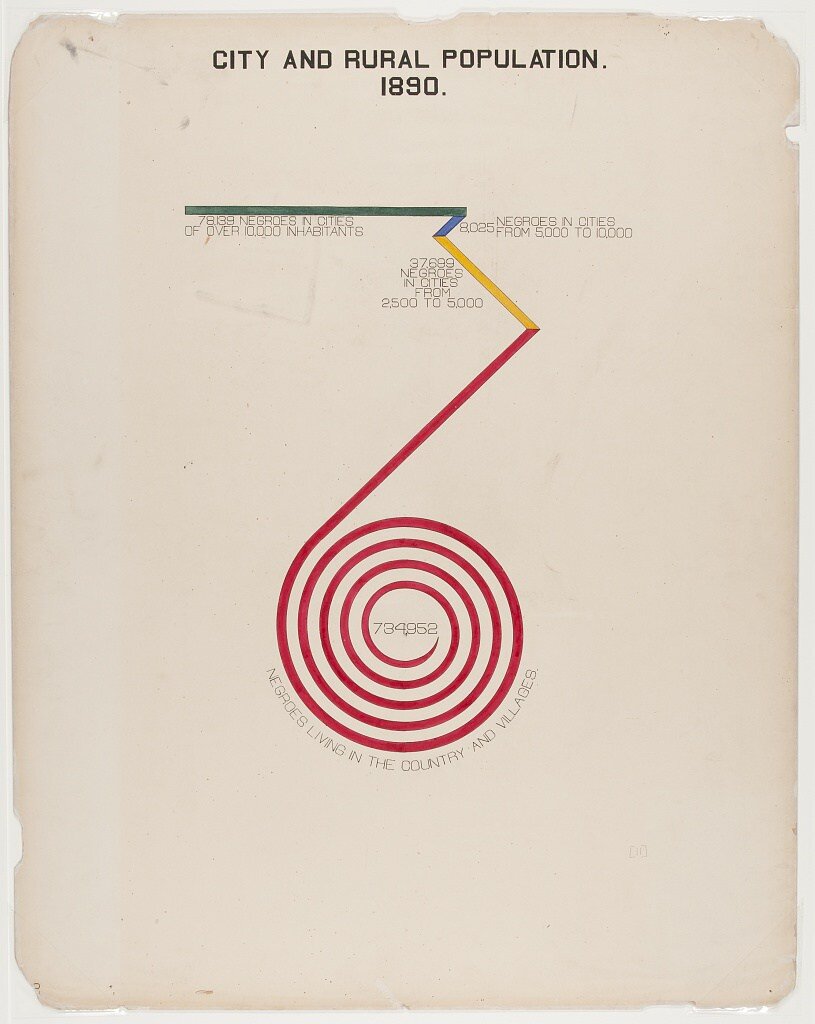W.E.B. Du Bois, William Edward Burghardt Du Bois in full, was an American sociologist, historian, civil rights activist, Pan-Africanist, author, writer, and editor. After completing graduate work at the University of Berlin and Harvard, where he was the first African American to earn a doctorate, he became a professor of history, sociology, and economics at Atlanta University.
W.E.B Du Bois Collection, Special Collections and University Archives, UMass Amherst Libraries
After three decades of emancipation, the gains made by African-Americans, those that existed at all, presented a decidedly mixed picture about the state of racial progress in the country. After graduating with a Ph.D. in history from Harvard University, W.E.B. Du Bois, the prominent African-American intellectual, sought a way to process all this information showing why the African diaspora in America was being held back in a tangible, contextualized form.
To accomplish this goal, Du Bois turned to the burgeoning field of sociology. Sociology’s scope in history, statistics, and demographics held the potential to quantifiably reveal "life within the Veil," as Du Bois called the structural forces of oppressions that separated black and white populations, whether that came to educational attainment, voting rights, or land ownership.
The end result was a collection of nearly 60 poster-sized infographics, all of which, aside from their intent to bring a degree of justice to Black Americans, they are also visionary examples of visual communication. Du Bois was working in the vein of the most widely recognized Modernists of the day, with his radical infographics predating the geometric, educational ambitions of the Bauhaus movement, which was founded in 1919.
The infographics have inspired a wave of 21st-century artists and data analysts still grappling with the centuries-old conundrums of* whitewashing. In some way, I hope this font family introduces the works and achievements of W.E.B. Du Bois to the greater design industry.
The infographics are hand-drawn in an uppercase sans serif with no curves. From what I’ve seen, there are 2 weights (light and bold), and 3 different widths (narrow, neutral, and wide). Lastly, one can rarely find a mix of italics and reverse italics reminiscent of slanted rectangles.
Expanding upon the work of W.E.B. Du Bois and his students, I’ve expanded the design to include lowercase characters, 11 sets of stylistic alternates, as well as a series of refined keys from some of the maps included amongst the infographics.
A photograph from the exhibit on African-American progress, on view inside the Palace of Social Economy at the 1900 World's Fair in Paris. (Library of Congress)











